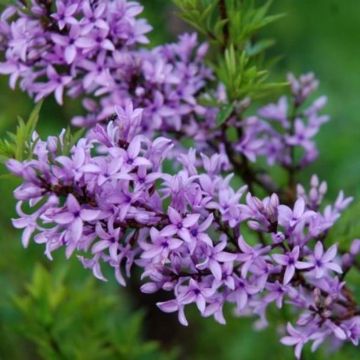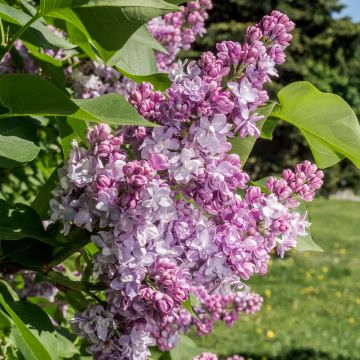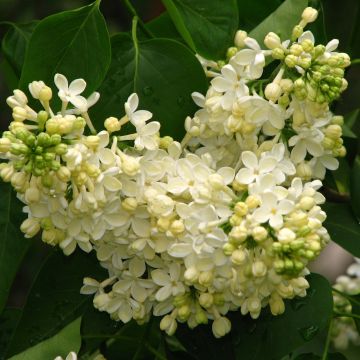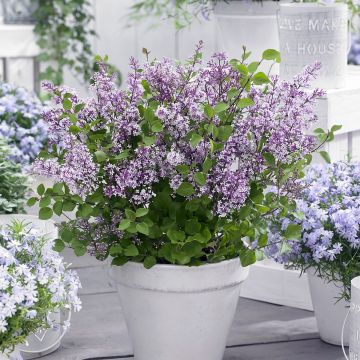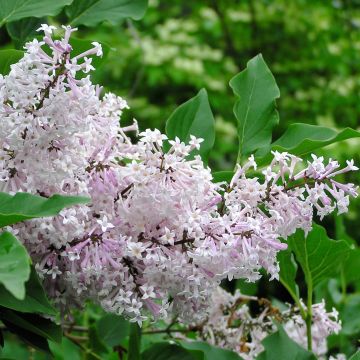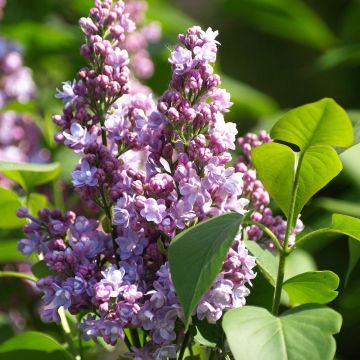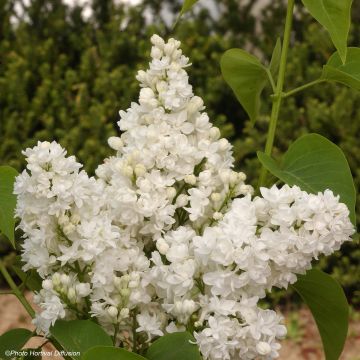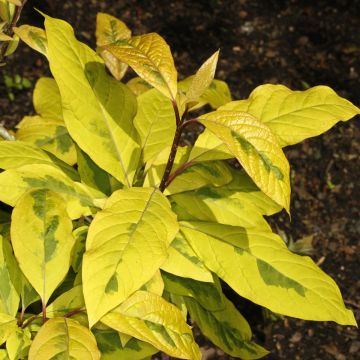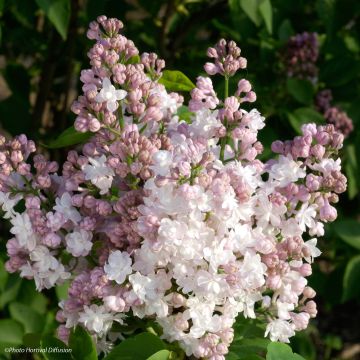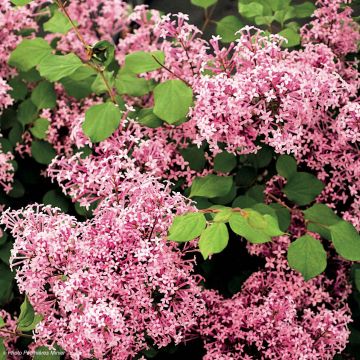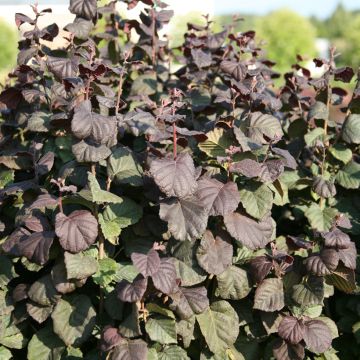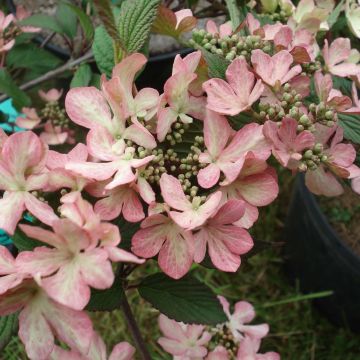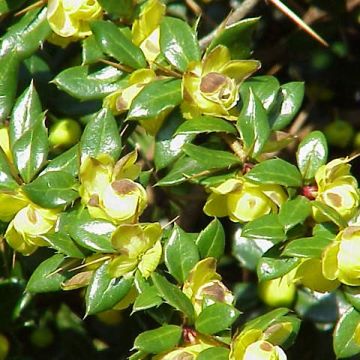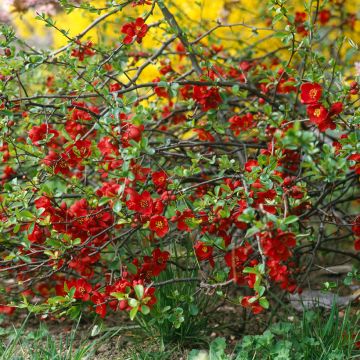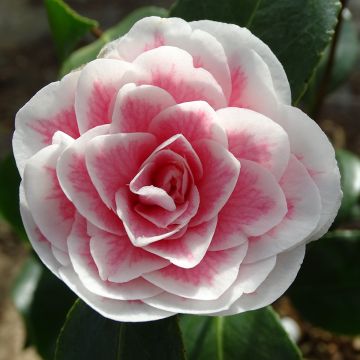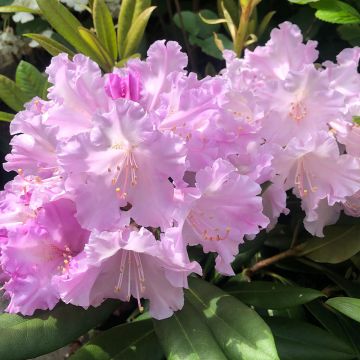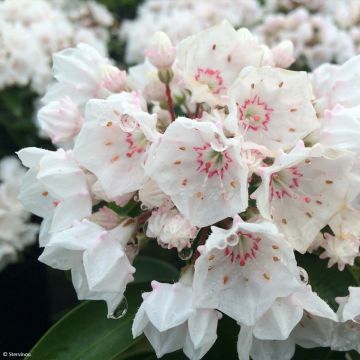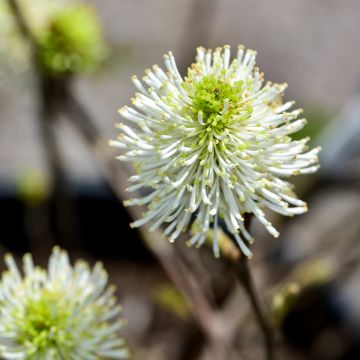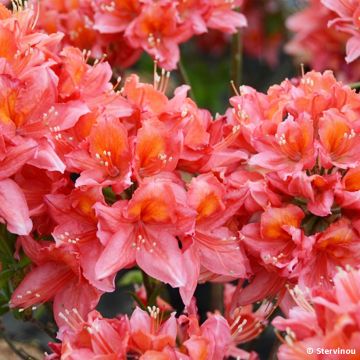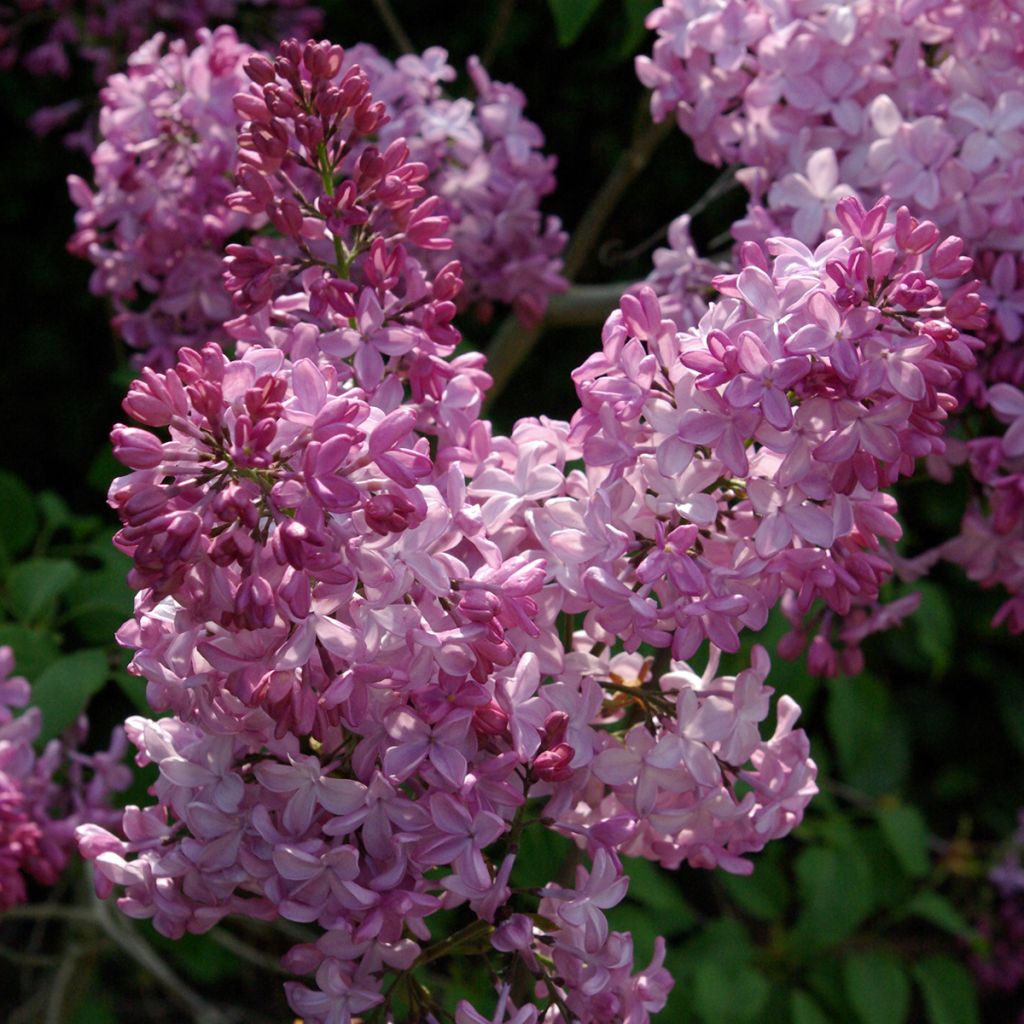

Syringa x hyacinthiflora Esther Staley - Hyacinth-flowered Lilac
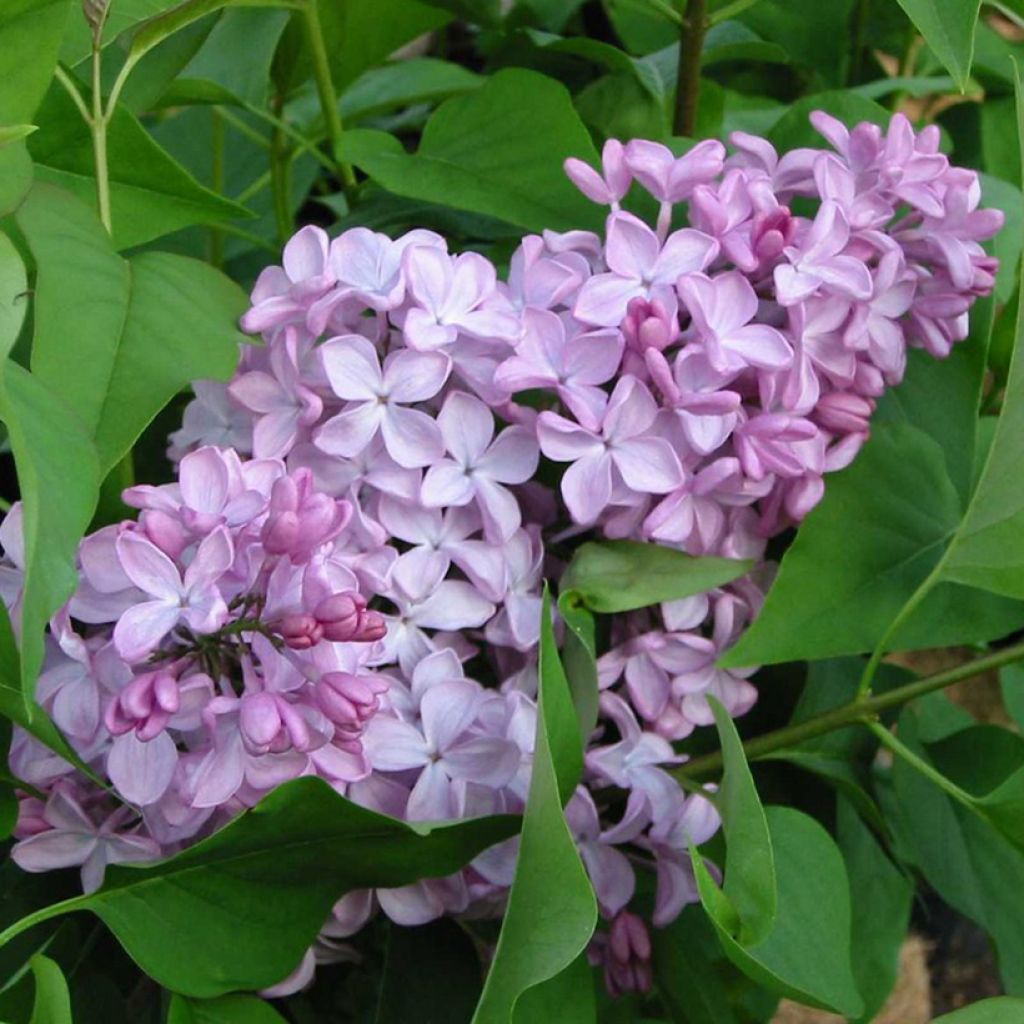

Syringa x hyacinthiflora Esther Staley - Hyacinth-flowered Lilac
Syringa x hyacinthiflora Esther Staley - Hyacinth-flowered Lilac
Syringa (x) hyacinthiflora Esther Staley
Hyacinth-flowered Lilac
This item cannot be shipped to the selected country
Delivery charge from €5.90
More information
Schedule delivery date,
and select date in basket
This plant carries a 24 months recovery warranty
More information
We guarantee the quality of our plants for a full growing cycle, and will replace at our expense any plant that fails to recover under normal climatic and planting conditions.
From €5.90 for pickup delivery and €6.90 for home delivery
Express home delivery from €8.90.
Does this plant fit my garden?
Set up your Plantfit profile →
Description
Syringa x hyacinthiflora 'Esther Staley' is a vigorous and remarkably floriferous hybrid lilac or hyacinth-flowered lilac, which forms numerous highly fragrant clusters of pink-lilac flowers that emerge from reddish buds. This deciduous bush is also notable for its vigour and cold resistance. It is bushy and even suckering, and it blooms earlier than classic lilacs, for a month. Its young shoots are tinged with bronze and its foliage takes on a beautiful autumnal, golden to bronze colours. It makes an excellent flowering hedge plant and can also be placed individually near the house to enjoy its abundant flowering.
Hyacinth-flowered lilacs result from the hybridisation of Syringa oblata, a pretty little Chinese lilac with early flowering, highly fragrant and superb autumn foliage, and S.vulgaris, the common lilac that is more familiar to us. The first of these hybrids was produced in France at the hands of Victor Lemoine, and then developed in California, from where there are some very beautiful varieties still available, including 'Esther Staley', born in 1948. All these plants belong to the olive family.
Lilac 'Esther Staley' forms an upright, branching bush, almost as wide as it is tall, and suckering. Ultimately, around the age of 20, it reaches a height of between 2.50 m and 4 m with a roughly equivalent spread. Its growth is quite rapid, encouraged by rich and moist soil. This variety blooms abundantly in April-May, 7 to 10 days before common lilacs, in the form of highly fragrant, pyramidal, 10 to 20 cm long panicles of small single, pink-lilac flowers, reddish-pink in bud. These inflorescences are grouped in clusters at the ends of the previous year's shoots. The flowering attracts many butterflies. The foliage is deciduous, appearing bronze in spring, turning green in summer, and then yellow to bronze in autumn before falling.
For their perfume, flowering and childhood memories, everyone loves charming and unpretentious lilacs. Syringa 'Esther Staley' is no exception to the rule. It is easy to grow in moist soil, even in cold regions, and very vigorous, embodying the charm and simplicity of old gardens. Its flowers are essential for creating a scented garden with hawthorns, laburnums, and ornamental apple trees. It can be planted on the edge of a grove, in groups, individually, or as an informal hedge mixed with other species (flowering cherries, Chinese almond, Japanese quinces, viburnums...). Its beautiful and highly fragrant clusters are appreciated in spring bouquets, alongside the first garden irises, bellflowers, and florist's ranunculus.
Report an error about the product description
Plant habit
Flowering
Foliage
Botanical data
Syringa
(x) hyacinthiflora
Esther Staley
Oleaceae
Hyacinth-flowered Lilac
Syringa vulgaris 'Esther Staley'
Cultivar or hybrid
Other Syringa - Lilac
Planting and care
Syringa hyacinthiflora 'Esther Staley' can be planted from November to March and from September to June. It can tolerate ordinary garden soil, but it prefers moist, rich, deep, loose soil, even with a tendency towards limestone. It is a good idea to apply a complete fertiliser every year at the start of the growing season. Avoid clayey, compact, and suffocating soils. It is best to plant it in full sun or light shade in hot climates, as its flowering is better when it receives maximum light and when winters are well contrasted. It is a good idea to remove faded inflorescences after flowering to prevent fruiting, which is not of interest and depletes the plant. This will promote a more abundant flowering the following year. This variety flowers on the previous year's shoots. A light pruning should be done at the end of winter to shape the plant.
Planting period
Intended location
Care
This item has not been reviewed yet - be the first to leave a review about it.
Spring-flowering shrubs
Haven't found what you were looking for?
Hardiness is the lowest winter temperature a plant can endure without suffering serious damage or even dying. However, hardiness is affected by location (a sheltered area, such as a patio), protection (winter cover) and soil type (hardiness is improved by well-drained soil).

Photo Sharing Terms & Conditions
In order to encourage gardeners to interact and share their experiences, Promesse de fleurs offers various media enabling content to be uploaded onto its Site - in particular via the ‘Photo sharing’ module.
The User agrees to refrain from:
- Posting any content that is illegal, prejudicial, insulting, racist, inciteful to hatred, revisionist, contrary to public decency, that infringes on privacy or on the privacy rights of third parties, in particular the publicity rights of persons and goods, intellectual property rights, or the right to privacy.
- Submitting content on behalf of a third party;
- Impersonate the identity of a third party and/or publish any personal information about a third party;
In general, the User undertakes to refrain from any unethical behaviour.
All Content (in particular text, comments, files, images, photos, videos, creative works, etc.), which may be subject to property or intellectual property rights, image or other private rights, shall remain the property of the User, subject to the limited rights granted by the terms of the licence granted by Promesse de fleurs as stated below. Users are at liberty to publish or not to publish such Content on the Site, notably via the ‘Photo Sharing’ facility, and accept that this Content shall be made public and freely accessible, notably on the Internet.
Users further acknowledge, undertake to have ,and guarantee that they hold all necessary rights and permissions to publish such material on the Site, in particular with regard to the legislation in force pertaining to any privacy, property, intellectual property, image, or contractual rights, or rights of any other nature. By publishing such Content on the Site, Users acknowledge accepting full liability as publishers of the Content within the meaning of the law, and grant Promesse de fleurs, free of charge, an inclusive, worldwide licence for the said Content for the entire duration of its publication, including all reproduction, representation, up/downloading, displaying, performing, transmission, and storage rights.
Users also grant permission for their name to be linked to the Content and accept that this link may not always be made available.
By engaging in posting material, Users consent to their Content becoming automatically accessible on the Internet, in particular on other sites and/or blogs and/or web pages of the Promesse de fleurs site, including in particular social pages and the Promesse de fleurs catalogue.
Users may secure the removal of entrusted content free of charge by issuing a simple request via our contact form.
The flowering period indicated on our website applies to countries and regions located in USDA zone 8 (France, the United Kingdom, Ireland, the Netherlands, etc.)
It will vary according to where you live:
- In zones 9 to 10 (Italy, Spain, Greece, etc.), flowering will occur about 2 to 4 weeks earlier.
- In zones 6 to 7 (Germany, Poland, Slovenia, and lower mountainous regions), flowering will be delayed by 2 to 3 weeks.
- In zone 5 (Central Europe, Scandinavia), blooming will be delayed by 3 to 5 weeks.
In temperate climates, pruning of spring-flowering shrubs (forsythia, spireas, etc.) should be done just after flowering.
Pruning of summer-flowering shrubs (Indian Lilac, Perovskia, etc.) can be done in winter or spring.
In cold regions as well as with frost-sensitive plants, avoid pruning too early when severe frosts may still occur.
The planting period indicated on our website applies to countries and regions located in USDA zone 8 (France, United Kingdom, Ireland, Netherlands).
It will vary according to where you live:
- In Mediterranean zones (Marseille, Madrid, Milan, etc.), autumn and winter are the best planting periods.
- In continental zones (Strasbourg, Munich, Vienna, etc.), delay planting by 2 to 3 weeks in spring and bring it forward by 2 to 4 weeks in autumn.
- In mountainous regions (the Alps, Pyrenees, Carpathians, etc.), it is best to plant in late spring (May-June) or late summer (August-September).
The harvesting period indicated on our website applies to countries and regions in USDA zone 8 (France, England, Ireland, the Netherlands).
In colder areas (Scandinavia, Poland, Austria...) fruit and vegetable harvests are likely to be delayed by 3-4 weeks.
In warmer areas (Italy, Spain, Greece, etc.), harvesting will probably take place earlier, depending on weather conditions.
The sowing periods indicated on our website apply to countries and regions within USDA Zone 8 (France, UK, Ireland, Netherlands).
In colder areas (Scandinavia, Poland, Austria...), delay any outdoor sowing by 3-4 weeks, or sow under glass.
In warmer climes (Italy, Spain, Greece, etc.), bring outdoor sowing forward by a few weeks.

































